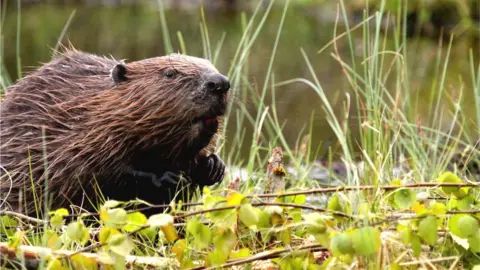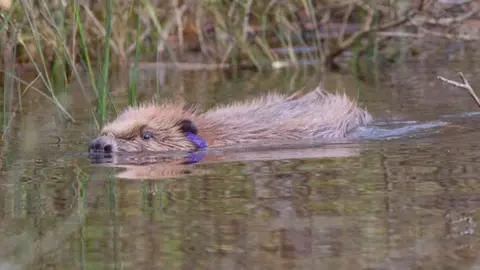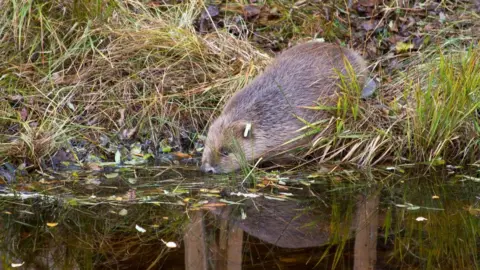Beaver release ban 'depleting' existing population
 Getty Images
Getty ImagesThe Scottish government's ban on releasing more beavers into the wild will see existing populations deplete and fragment, a new report claims.
A trial at Knapdale forest in Argyll saw 16 animals introduced in 2009 but numbers fell back to nine.
Another 21 have bolstered the population but there are concerns about lack of genetic diversity without more.
A legal challenge to the policy has begun and ministers will not comment while it's ongoing.
Legislation was introduced in 2019 making beavers a protected species meaning it's illegal to kill or disturb them.
Alongside Knapdale, they now live at two other sites in Scotland - Tayside and Beauly - where they were released unofficially.
The large Tayside population has long caused friction with farmers because the beavers' dam building can cause flooding in an important area of fertile arable land.
An agreement means those which are disturbing or destroying farm land can be removed under licence but there have been concerns about the numbers being culled.
Work to reinforce the population at Knapdale has now ended and a final report from the project team says there needs to be a "bigger picture" approach from the Scottish government.
 RZSS
RZSSIt says the current policy not to allow any further reintroduction means those being removed from Tayside are either being killed or sent to sites in England.
The risk, it says, is that the genetic diversity of Scotland's beavers will diminish, threatening their breeding potential and ultimately their numbers.
'Landmark conservation project'
Gill Dowse from the Scottish Wildlife Trust said: "The Scottish beaver trial was a landmark conservation project that showed how beavers can create and restore important wetland and native woodland habitats.
"A limited number of beavers were introduced during the trial so it was important to go back and release more, giving them a good chance to thrive. After three years of fieldwork we can be confident this reinforcement project has been a success, and that we have done all we can to bolster the wild population in Knapdale."
The report says the beavers have spread through the whole of Knapdale and that all suitable release sites have been occupied.
Ministers want them to spread naturally into other areas but there's concern that the geography around Knapdale would make that difficult.
The site was chosen because it was thought the beavers could be contained within the area.
 RZSS
RZSSThe report says: "Arguably, beavers cannot flourish in Scotland without being introduced into other areas.
"Currently, beavers caught in Tayside are translocated away from conflict areas to new reintroduction projects in England. This is fragmenting and depleting the Scottish population of beavers, and likely reducing genetic diversity.
"In the long term, Scotland requires a bigger-picture vision for beavers."
Last year the charity Trees for Life launched a crowd funding appeal to challenge the Scottish government agency NatureScot over the number of beavers being culled.
It said 20% of the population was being killed under licence and other options, such as moving them, were not being properly considered.
A spokesman for the Scottish government said: "Given that judicial review proceedings have been raised with regards to this matter it would not be appropriate for the Scottish government to comment."
